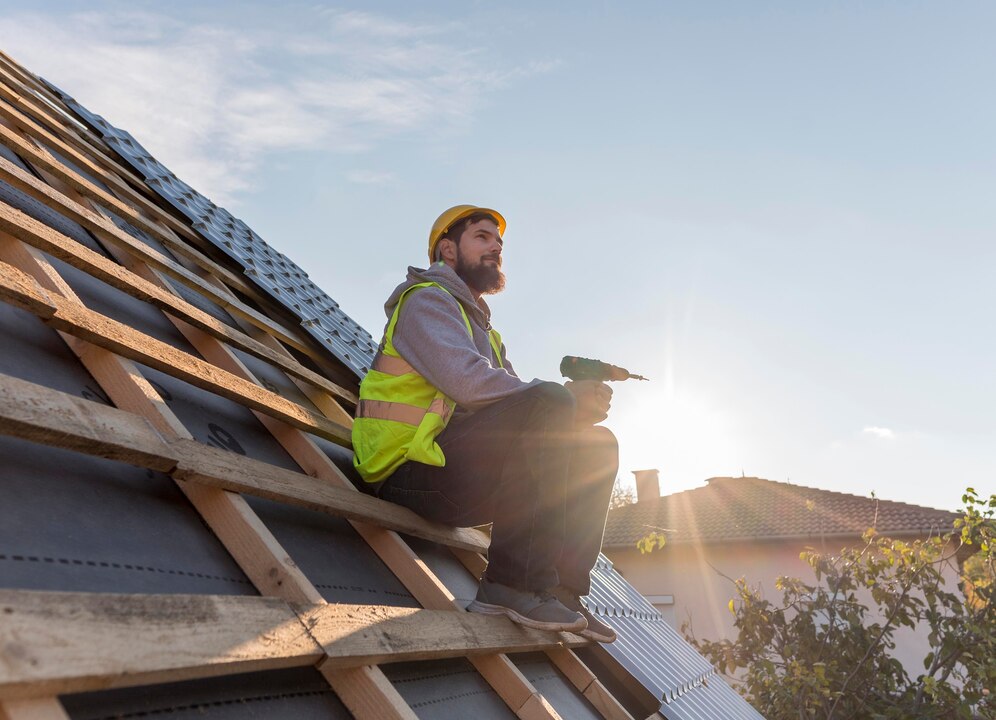Roof flashing is a crucial component of any roofing system, playing a vital role in keeping your home dry and secure. This often-overlooked element helps to direct water away from important areas on your roof, such as joints and edges, to prevent leaks and water damage. Understanding roof flashing and its functions can help you maintain the integrity of your roof and avoid costly repairs down the line.
Made from materials like aluminum, copper, or galvanized steel, roof flashing serves as a barrier against water infiltration. It’s installed in various areas where the roof surface meets vertical structures, such as chimneys, skylights, and vent pipes. Proper installation and maintenance of roof flashing are key to its effectiveness in protecting your home from water damage.
Knowing the different types of roof flashing and recognizing signs of wear and tear can help you address issues before they turn into significant problems. By staying informed and proactive, you can ensure your roof remains in top condition and provides long-lasting protection for your home.
What Is Roof Flashing?
Roof flashing is an essential component used to shield critical areas of your roof from water infiltration. It typically consists of thin pieces of impervious materials like aluminum, copper, or galvanized steel. These materials are known for their durability, resistance to rust, and ability to be molded into various shapes and sizes, making them ideal for keeping water out of vulnerable spots on your roof.
Flashing works by creating a barrier at joints, edges, and other intersections on your roof. These areas are prone to leaks because they often involve complex angles and seams where water can seep in. Flashing is installed in these critical zones to direct water flow away from the structure, effectively preventing leaks. It serves as a protective seal that ensures water is channeled to the gutters and away from your home’s interior. A properly installed flashing system is vital for the longevity of your roof and helps in avoiding costly water damage to the home.
Common Types of Roof Flashing
Different types of roof flashing are designed for specific areas and purposes. Here are some of the most common types:
1. Step Flashing: Step flashing is used where the roof meets a vertical surface, like a wall. It’s installed in layers, or “steps,” between each shingle and the wall, creating a continuous barrier that directs water down to the roof surface and away from the junction.
2. Valley Flashing: This type of flashing is placed in the valleys where two roof planes meet. Valleys are natural water channels on a roof, and valley flashing ensures that water flows smoothly off the roof, preventing it from pooling and causing leaks.
3. Vent Pipe Flashing: Vent pipe flashing is designed to seal around plumbing vents that penetrate the roof. These flashings typically feature a cylindrical shape that fits snugly around the pipe and flares out at the base to direct water away from the penetration point.
4. Drip Edge Flashing: Drip edge flashing is installed along the roof’s edges to guide water into the gutters. It protects the roof deck and fascia from water damage by channeling water away from the roof’s edge.
5. Chimney Flashing: This type of flashing is used around the chimney base. Chimney flashing combines several pieces of material to create a watertight seal between the chimney and the roof.
Understanding these types of flashing helps in ensuring that all critical areas of your roof receive proper protection against water infiltration.
How Roof Flashing Prevents Leaks
Roof flashing plays a vital role in preventing leaks by creating a waterproof barrier at vulnerable points on the roof. It directs water away from joints, seams, and other key areas where the roof meets vertical structures. This is essential because these areas are where water can easily seep through, leading to leaks and water damage inside the home. Properly installed flashing will channel water away from these critical spots and onto the roof surface, where it can safely flow into the gutters and be carried away from the house.
Common areas where flashing is essential include valleys, where two roof planes meet, and around roof penetrations such as chimneys, vent pipes, and skylights. These spots are prone to leaks due to the complex angles and seams involved. Flashing ensures that water flows freely over these areas without getting trapped or seeping into the roof structure. By keeping water out, flashing helps to maintain the structural integrity of the roof and prevents costly water damage.
Signs Your Roof Flashing Needs Repair or Replacement
It’s crucial to know the warning signs that indicate your roof flashing may need repair or replacement. Catching these signs early can prevent major leaks and extensive water damage. One of the most common signs is rust or corrosion on metal flashings. Rust can weaken the material, making it less effective at keeping water out. Cracks or holes in flashing are also clear indicators that repairs are necessary.
Missing flashing or pieces that have come loose should be addressed immediately, as they leave gaps where water can easily penetrate. Other signs include water stains on ceilings or walls inside your home, indicating that water is making its way through compromised flashing. Regular inspections and timely maintenance of roof flashing can prevent these issues from escalating into major problems. Ensuring that flashing is in good condition helps to maintain a watertight roof.
Conclusion
Roof flashing is an essential part of your roofing system, providing protection against water leaks and damage. By understanding what roof flashing is, the types available, its role in preventing leaks, and the signs that it needs repair or replacement, you can better maintain the integrity of your roof. Regular inspections and timely repairs are key to ensuring that your roof flashing continues to perform effectively.
At Mega Pro, we are dedicated to helping you protect your home with quality roofing services. If you notice any signs that your roof flashing may need attention, contact us today for an inspection. We are here to keep your roof in top condition and safeguard your property.


